Can I Use Interior Paint Outside
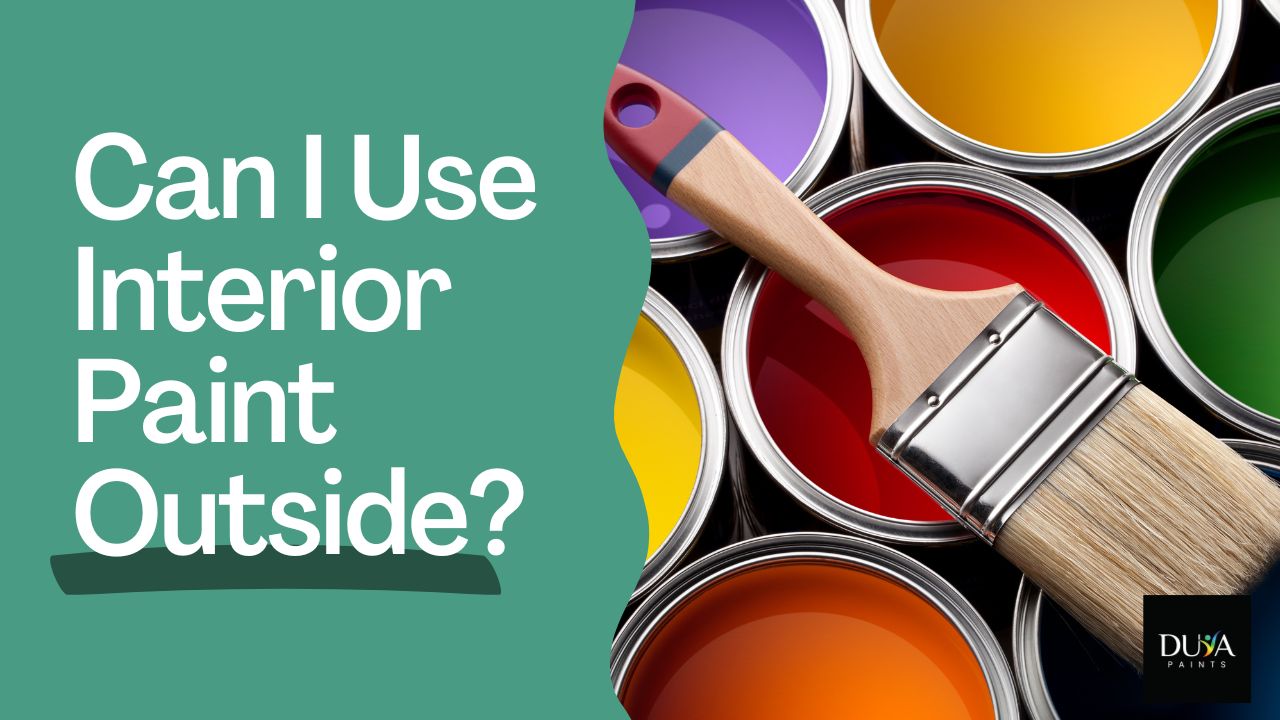
Using the right type of paint for your project is crucial for a durable and aesthetically pleasing finish. While it might be tempting to use leftover interior paint for an outdoor project, this is generally not advisable.
No, using interior paint outside is not recommended due to its lack of durability and inability to withstand outdoor elements like sunlight, moisture, and temperature fluctuations.
In this article, we will delve into the reasons why interior paint should not be used outside and explore the potential issues that can arise from such a decision.

Understanding the Differences
First, let’s understand the purposes of interior and exterior paints. Then, I’ll explain the consequences of using interior paint outside.
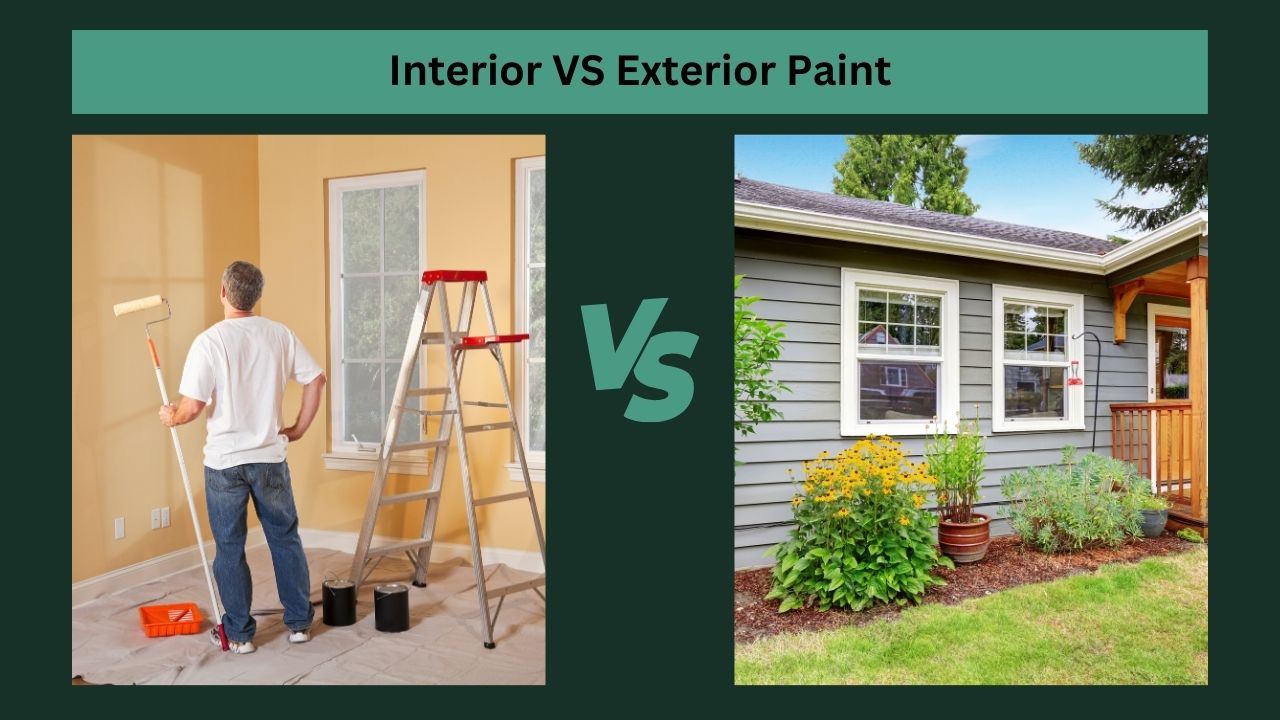
Composition and Purpose of Interior Paint
Interior paint is designed for use inside homes where it encounters minimal exposure to harsh environmental conditions. Its formulation typically includes:
- Lower Levels of Resins and Additives: Interior paint contains fewer additives such as fungicides, UV protectants, and binders compared to exterior paints. These additives are crucial for protecting against weather elements.
- Emphasis on Aesthetic Appeal: Interior paints prioritize factors like smooth application, color vibrancy, and ease of cleaning. These features cater to indoor environments where aesthetic appeal is a primary consideration.
Also Read: How to Paint an Interior Door Like a Professional?
Composition and Purpose of Exterior Paint
In contrast, exterior paint is formulated to endure harsh weather conditions. Its composition includes special resins and additives that enhance its resistance to moisture, UV rays, and temperature fluctuations.
Weather Resistance
- One of the primary distinctions between interior and exterior paint is weather resistance. Exterior paint is made to withstand rain, wind, sunlight, and temperature variations.
- It contains ingredients that prevent the paint from peeling, cracking, and fading. On the other hand, interior paint lacks these weather-resistant properties, making it unsuitable for outdoor use.
I’m adding this Paint Talk forum link for your convenience. It discusses choosing between interior and exterior paint, offering valuable insights.
The Consequences of Using Interior Paint Outside
Rapid Degradation
Using interior paint outside can lead to rapid deterioration. Exposure to the elements causes interior paint to become brittle, crack, flake, and peel. These issues can surface within a single season, leading to unsightly and damaged surfaces that require frequent maintenance and repainting.

Increased Maintenance and Costs
The damage caused by using interior paint outdoors not only looks bad but also incurs higher maintenance costs. To fix the damage, you must remove the peeling paint, apply an appropriate primer, and then repaint with exterior paint. This process involves more labor and materials, increasing the overall cost of the project.
Steps to Correct Mistakes
Last year, I made the mistake of using interior paint on an outdoor project. It didn’t take long for the paint to start peeling and cracking under the relentless sun and occasional rain. Here’s how I corrected my error and restored the surface effectively:
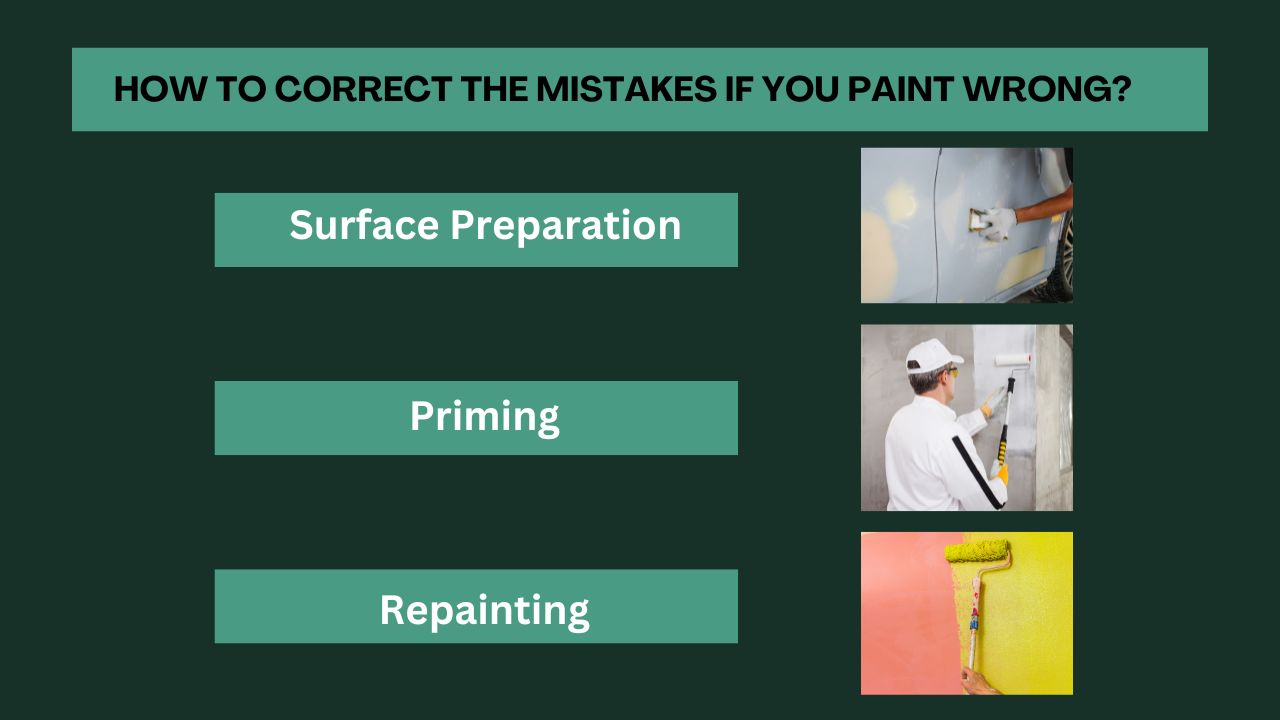
1. Surface Preparation
First, I tackled the problem by carefully removing all the loose and peeling paint using a scraper and sandpaper. This step was crucial to ensure a smooth and clean surface for the new paint to adhere to.
2. Priming
Next, I applied a high-quality exterior-grade primer. This step was essential to create a strong bond between the surface and the new paint, providing a solid foundation for better adhesion and durability.
3. Repainting
Finally, I applied two coats of exterior paint designed to withstand the elements. I made sure to choose a paint that offered UV protection and resistance to moisture, which are critical for long-term durability.

Why Interior Paint Is Unsuitable for Outdoor Use
Using interior paint outdoors is a common mistake that can lead to various issues due to its composition and formulation. Here’s why interior paint is unsuitable for outdoor use:
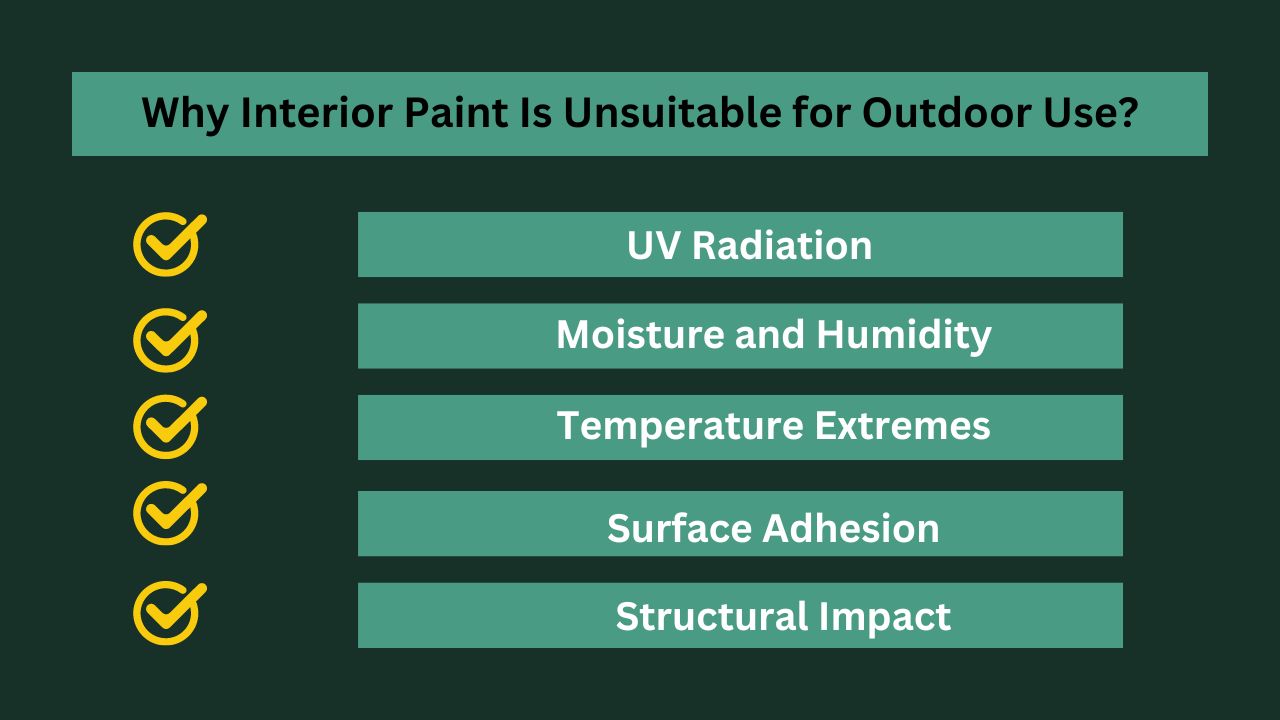
Lack of Weather Resistance
Interior paint is not equipped to withstand the rigors of outdoor exposure, which include:
- UV Radiation: Sunlight contains ultraviolet (UV) rays that can cause interior paint colors to fade quickly. The pigments used in interior paints are not designed to resist prolonged exposure to UV rays, leading to color deterioration over time.
- Moisture and Humidity: Exterior environments subject paint to frequent moisture exposure from rain, dew, and humidity. Interior paint lacks the protective barriers necessary to prevent water penetration, making it prone to blistering, peeling, and mold growth.
- Temperature Extremes: Outdoor temperatures fluctuate more widely than indoor settings. Interior paint may not expand and contract adequately with these temperature changes, resulting in cracks and peeling.
Durability Issues
Using interior paint outdoors can result in premature deterioration and structural damage:
- Surface Adhesion: Interior paint may not adhere properly to exterior surfaces such as wood, metal, or masonry. This poor adhesion can lead to uneven coverage, poor durability, and an unattractive finish.
- Structural Impact: Over time, exposure to outdoor elements can compromise the integrity of interior paint. It may chip, crack, or bubble, compromising both its protective and aesthetic functions.

Maintenance Challenges
Maintaining a coat of interior paint on exterior surfaces requires frequent touch-ups and repairs:
- Increased Maintenance Needs: Outdoor environments subject paint to more wear and tear. Maintaining interior paint outdoors necessitates regular inspections and touch-ups to address weather-related damage promptly.
- Long-Term Costs: While interior paint may seem cost-effective initially, the need for frequent repainting and repairs due to its inadequate durability can lead to higher long-term expenses.
Explore AskAboutMoney for insights on using interior paint outside. Get advice on potential issues and best practices.
Health Implications of Paint Misuse
Interior paints are designed to be low in VOCs to ensure safe indoor air quality. Exterior paints, however, contain higher levels of VOCs and other chemicals necessary for durability and weather resistance. Using exterior paint indoors can result in harmful fumes, posing health risks to occupants.
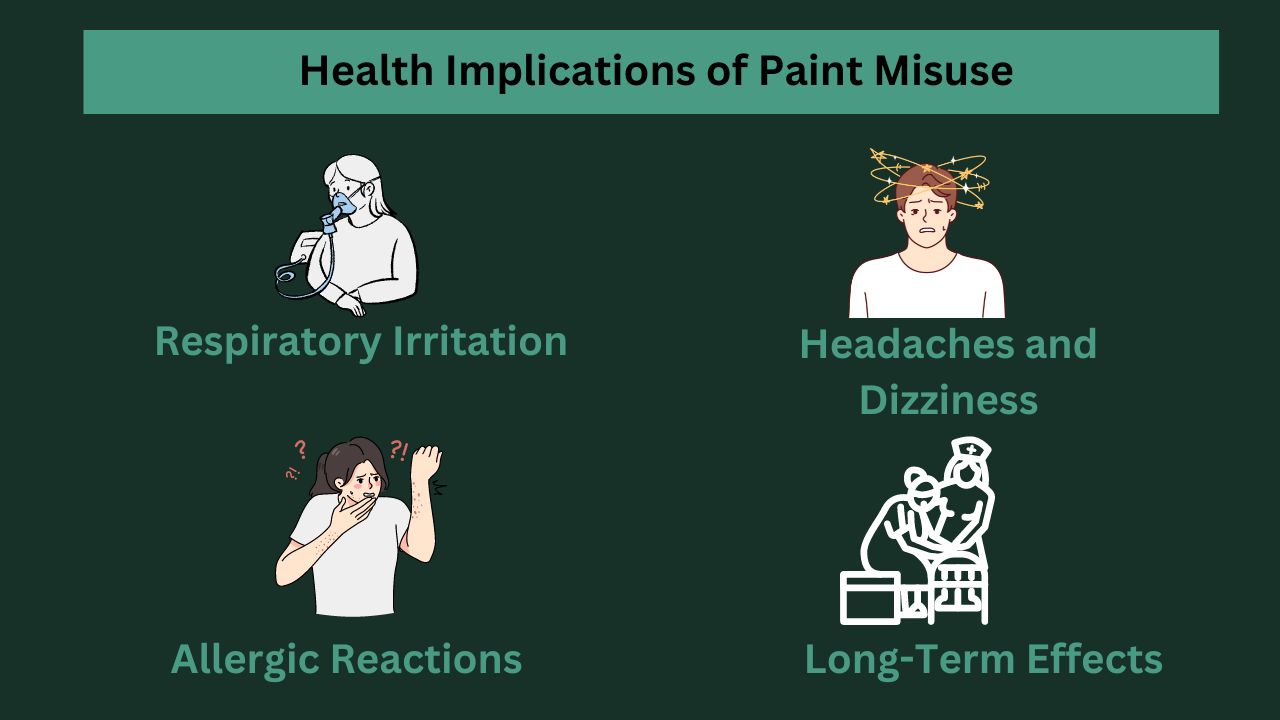
Health Risks
Exposure to elevated levels of VOCs from exterior paint used indoors can lead to various health risks:
- Respiratory Irritation: VOCs can irritate the respiratory system, leading to symptoms such as coughing, wheezing, and shortness of breath.
- Headaches and Dizziness: Prolonged exposure to VOCs may cause headaches, dizziness, and nausea, particularly in sensitive individuals.
- Allergic Reactions: Some people may experience allergic reactions or worsening of existing respiratory conditions, such as asthma, due to VOC exposure.
- Long-Term Effects: Chronic exposure to VOCs has been linked to more severe health effects, including damage to the liver, kidneys, and central nervous system.
If you need more information beyond this article, check out this Quora forum discussion on using interior paint outside.

Practical Applications of Interior and Exterior Paints
Now that you’ve read about why interior paint is unsuitable for outdoor use and the health risks, do you want a summary of the practical applications of interior and exterior paints?
Interior Paint Uses
- Walls and Ceilings: Interior paint is ideal for smooth, clean finishes that withstand washing and scrubbing.
- Low-VOC Formulas: Ensures safe indoor air quality, minimizing health risks.
Exterior Paint Uses
- Building Exteriors: Protects against elements with high durability and weather resistance.
- Outdoor Surfaces: Adheres well to various surfaces like wood, stucco, and brick, ensuring long-lasting protection.
My Personal Experience
I once encountered a situation where a client mistakenly used interior paint on their outdoor patio. Within months, the paint began peeling and cracking from exposure to the elements. We had to strip off the failed paint, apply an exterior-grade primer, and repaint the patio with proper exterior paint. This experience highlights the critical need to use the right type of paint for specific applications, ensuring durability and long-term performance.
How to Avoid Common Mistakes

Proper Label Reading
Always check the label before purchasing paint. Look for indications that the paint is suitable for exterior use. Labels often provide details about the paint’s resistance to weather and environmental conditions.
Consulting with Professionals
If you need clarification on the type of paint to use, consulting with a professional painter can save you time and money. They can recommend the best products for your specific needs and ensure a high-quality finish.
Conclusion
Using interior paint outside is not recommended due to its lack of durability and inability to withstand outdoor elements like sunlight, moisture, and temperature fluctuations.
Interior paint is formulated for indoor use, where it can provide aesthetic appeal and easy maintenance. For outdoor projects, investing in quality exterior paint ensures long-lasting protection and a beautiful finish that stands up to the rigors of the environment.

